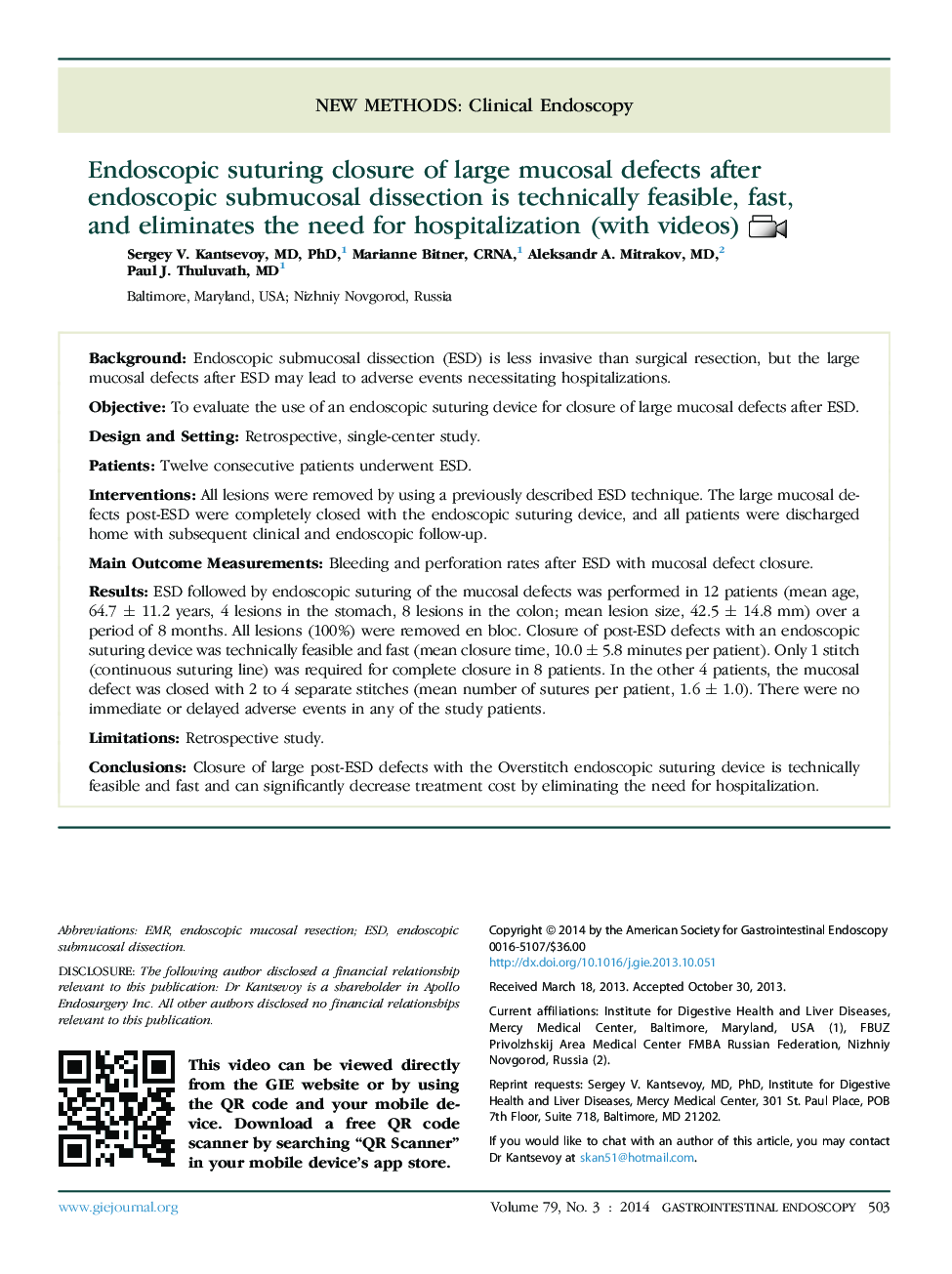| Article ID | Journal | Published Year | Pages | File Type |
|---|---|---|---|---|
| 3303410 | Gastrointestinal Endoscopy | 2014 | 5 Pages |
BackgroundEndoscopic submucosal dissection (ESD) is less invasive than surgical resection, but the large mucosal defects after ESD may lead to adverse events necessitating hospitalizations.ObjectiveTo evaluate the use of an endoscopic suturing device for closure of large mucosal defects after ESD.Design and SettingRetrospective, single-center study.PatientsTwelve consecutive patients underwent ESD.InterventionsAll lesions were removed by using a previously described ESD technique. The large mucosal defects post-ESD were completely closed with the endoscopic suturing device, and all patients were discharged home with subsequent clinical and endoscopic follow-up.Main Outcome MeasurementsBleeding and perforation rates after ESD with mucosal defect closure.ResultsESD followed by endoscopic suturing of the mucosal defects was performed in 12 patients (mean age, 64.7 ± 11.2 years, 4 lesions in the stomach, 8 lesions in the colon; mean lesion size, 42.5 ± 14.8 mm) over a period of 8 months. All lesions (100%) were removed en bloc. Closure of post-ESD defects with an endoscopic suturing device was technically feasible and fast (mean closure time, 10.0 ± 5.8 minutes per patient). Only 1 stitch (continuous suturing line) was required for complete closure in 8 patients. In the other 4 patients, the mucosal defect was closed with 2 to 4 separate stitches (mean number of sutures per patient, 1.6 ± 1.0). There were no immediate or delayed adverse events in any of the study patients.LimitationsRetrospective study.ConclusionsClosure of large post-ESD defects with the Overstitch endoscopic suturing device is technically feasible and fast and can significantly decrease treatment cost by eliminating the need for hospitalization.
